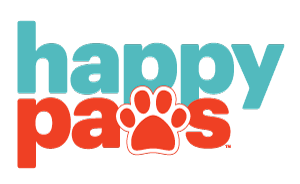New Year’s Eve is a time of celebration and hope for many people, but it can also be a source of stress and anxiety for our furry companions. The loud noises, unfamiliar smells, and changes in routine during New Year’s Eve celebrations can trigger fear and panic in some dogs, affecting their wellbeing and behavior. Noise aversion is a serious concern affecting one in three dogs in the United States. As veterinarians, we have a vital role in assisting our clients and their pets in coping with this challenge by providing proactive advice and effective solutions.
Unlike other unpredictable noise events, such as thunderstorms, we can anticipate the noise associated with New Year’s Eve celebrations. Educating our clients about the signs of noise aversion in dogs, including hiding, panting, pacing, trembling, or even self-injury or property damage, is crucial. We should also inform them about the possibility of social transmission, where one dog’s fear can influence other pets in the household. By identifying the problem early, we can intervene before it escalates.
One of the most effective ways to help dogs with noise aversion is to establish a calm and secure environment for them during the noisy festivities. This should be a comfortable, familiar, and quiet space where the dog can retreat voluntarily. Provide their favorite toys, blankets, and treats to offer comfort and distraction. Importantly, dogs should not be forced into this space or punished for displaying fear. Instead, they should be praised and rewarded for staying calm and relaxed.
Reducing the impact of noise is essential. This can be achieved by closing windows and curtains and playing soothing music or white noise. These measures can help mask the sounds and sights of fireworks and other loud noises. For some dogs, wearing ear muffs or wraps that cover their ears and apply gentle pressure can help muffle the sounds.
In some cases, environmental and behavioral strategies may not be sufficient to alleviate a dog’s anxiety. In such situations, veterinarians can consider prescribing medications that can help reduce the dog’s fear response and make them more comfortable. Several options are available, depending on the severity of the condition and the client’s preferences. Always discuss the benefits and risks of each option with your clients and monitor the dog’s response to treatment.
As veterinary professionals, we can offer various ways to support our clients. A downloadable noise aversion checklist can serve as a starting point for the conversation. We can also discuss the potential use of compression garments, supplements, or medications to tailor our approach to each patient with noise aversion.
By providing our clients with proactive advice and effective solutions for noise aversion in dogs, we can help them enjoy New Year’s Eve with their pets without compromising their welfare or safety. In doing so, we strengthen our relationship with our clients and their pets, showing that we genuinely care about their wellbeing and happiness.
To learn more about Sileo® (dexmedetomidine oromucosal gel), the first FDA-approved treatment for noise aversion in dogs, visit www.noiseaversion.com.
This article was reviewed/edited by board-certified veterinary behaviorist Dr. Kenneth Martin and/or veterinary technician specialist in behavior Debbie Martin, LVT.
Tracey Diess is a Fear Free Certified Veterinarian with special interests in ultrasonography, soft tissue surgery, and pain management. Dr. Deiss joined Zoetis as the professional services veterinarian for the Houston and surrounding areas in 2018 and is the current medical lead for Core Therapeutics.
Want to learn more about Fear Free? Sign up for our newsletter to stay in the loop on upcoming events, specials, courses, and more by clicking here.
Brought to you by our friends at Zoetis.







